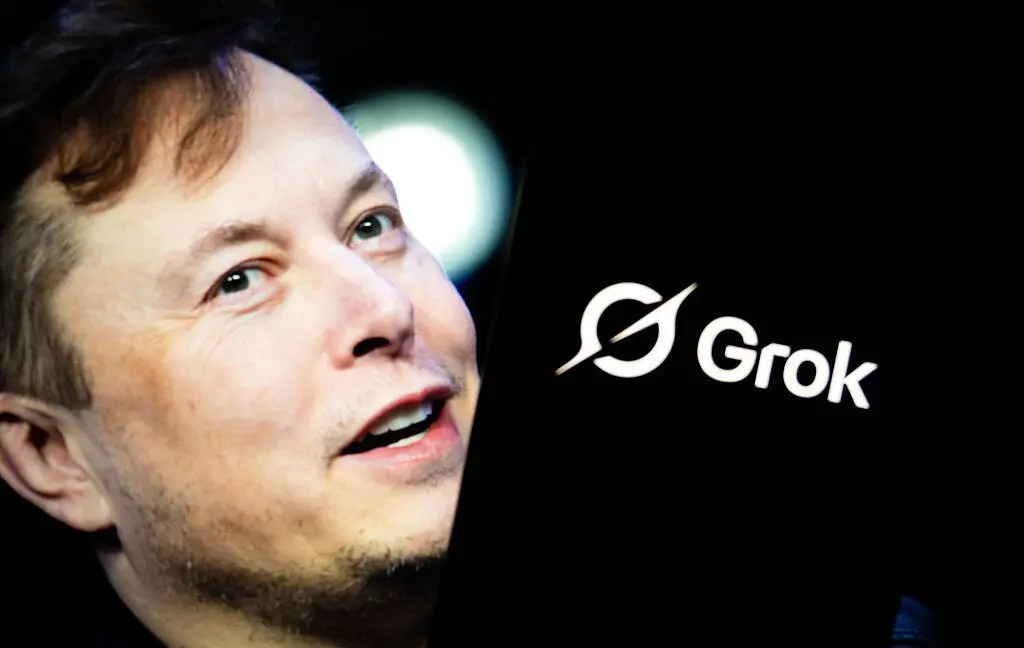Microsoft's AI Revolution: Transforming Excel with Billion-Dollar Investment
4 Sources
4 Sources
[1]
Excel's AI Makeover: Microsoft's Billion-Dollar Bet on Smarter Spreadsheets
In the race to infuse artificial intelligence (AI) into every corner of the digital world, Microsoft has set its sights on conquering the final frontier of office productivity: the humble spreadsheet. The tech giant's latest creation, SpreadsheetLLM, aims to change how businesses crunch numbers and make decisions. By harnessing the power of large language models (LLMs), this AI tool, which is still in the testing stages, could transform Excel from a static grid into a dynamic, question-answering powerhouse -- potentially reshaping workflows for millions of users worldwide. "The infinite cell-like nature and references to cells in spreadsheets make it challenging for LLMs, which have been trained using standard linear tokenization techniques, to understand the spreadsheet data model," Rogers Jeffrey Leo John, co-founder and CTO of DataChat, a no-code, generative AI platform, told PYMNTS. At the heart of SpreadsheetLLM lies SheetCompressor, an encoding framework that effectively compresses spreadsheets for use by LLMs. This breakthrough, detailed in a study on the arXiv preprint server, tackles a longstanding challenge in applying AI to spreadsheets. Microsoft's SheetCompressor, uses three clever tricks to shrink spreadsheets for AI use. First, it spots and compresses repetitive data. Next, it converts information to a format (JSON) without losing details. Finally, it bundles data together with matching formats. The results are impressive. SheetCompressor cuts down the AI's workload by 96%. This could mean businesses pay just 1/25th of what they would otherwise for AI to crunch their spreadsheet numbers. Of course, AI is already useful for manipulating spreadsheets. Microsoft's Excel Ideas feature uses AI to analyze data and suggest visualizations, charts and pivot tables. Users can simply select a range of data and ask Excel to recommend insights, streamlining the process of identifying trends and patterns. Google Sheets has introduced Smart Fill, which uses AI to detect patterns in data entry and automatically suggests column completions. This feature saves time on repetitive data input tasks and helps maintain consistency across large datasets. Startups like Rows and Causal are building AI-native spreadsheet alternatives. Rows, for instance, allows users to pull data from various sources using natural language queries, while Causal focuses on financial modeling with AI-assisted forecasting. Tiller Money leverages AI to categorize financial transactions automatically in spreadsheets, helping users track expenses and budgets more effectively. The system learns from user corrections to improve accuracy over time. Spreadsheet.com incorporates AI to suggest formulas and functions based on a sheet's data and column headers. It can also generate charts and graphs automatically when users select data ranges. Airtable's AI assistant can help users create new tables, suggest field types, and even write formulas based on natural language descriptions of what the user wants to achieve. Microsoft's team tested SpreadsheetLLM against proprietary models like GPT-3.5 and GPT-4 and open-source offerings like Llama 2, Llama 3, Phi-3, and Mistral-v2. The results were impressive, with GPT-4 showing a 27% improvement in table detection compared to previous methods. The researchers have also introduced a chain of spreadsheet (CoS) methodology, further refining the AI's ability to work with spreadsheet data by breaking tasks into manageable steps for the models. The implications for businesses could be far-reaching. With its massive user base, Excel has long been a cornerstone of Microsoft's Office suite and a crucial tool across industries. The company aims to enhance spreadsheet functionality by integrating AI capabilities, potentially automating complex tasks, and offering new data interpretation methods. "SpreadsheetLLM has the potential to transform data analysis in spreadsheets by enabling efficient user interactions and more accurate responses to plain English questions on spreadsheet data," John said. However, the technology is not without limitations. Due to token constraints, the framework doesn't account for visual elements like background colors and borders. The researchers also acknowledge that more work is needed in semantic understanding of cell contents. While direct integration of SpreadsheetLLM into Microsoft Excel isn't imminent, the research signals a clear direction for future feature enhancements. The potential to dramatically improve data analysis and spreadsheet insight generation could lead to time savings and new data-driven discoveries for businesses. The technology could have broader implications for how businesses leverage their data assets. "With technologies like SpreadsheetLLM that provide ways of encoding the knowledge present in spreadsheets to LLMs, business users will now be able to leverage GenAI technologies to combine information from their spreadsheets and data warehouses to make more efficient business decisions," John predicted.
[2]
Your Microsoft Excel spreadsheets could soon have a lot more AI power
Microsoft researchers have unveiled a large language model with the ability to enhance the interaction with and understanding of spreadsheets has been introduced, marking a significant leap forward for AI's ability to handle Excel files. Outlined in a paper, entitled 'SpeadsheetLLM: Encoding Spreadsheets for Large Language Models,' the team looks to explore the complexities and challenges of applying AI to structured, logical and formulaic datasets. SpreadsheetLLM promises the ability to combine these datasets with the already proven capabilities of large language models. According to the researchers, "SpreadsheetLLM is an approach for encoding spreadsheet contents into a format that can be used with large language models (LLMs) and allows these models to reason over spreadsheet contents." The research notes the widespread use of spreadsheets in various business operations, from simple data entry to complex financial modelling. However, despite the importance of these numerical files, existing LLMs have struggled to structure the data and formulas. By encoding the data in a package that LLMs can comprehend, Microsoft's researchers hope to unlock the processing power of current generative AI tools that use existing LLMs within the Excel environment. By unlocking the full potential of spreadsheet data, businesses using generative AI tools could improve their data-based decision-making and improve the efficiency of other administrative tasks. Although SpreadsheetLLM is currently little more than a research project, the work to improve compatibility between Excel files and existing AI tools does at least signify the continually evolving power of AI. Moreover, while the company has not yet committed to building such a tool on a wider scale, Microsoft's multibillion-dollar investment in ChatGPT maker OpenAI and its subsequent rollout of generative AI functionalities across its office apps implies that the tech giant is committed to making AI more accessible.
[3]
Even AI struggles to understand Excel sheets - Microsoft swoops in to help
SpreadsheetLLM turns spreadsheets into bite-sized chunks that LLMs can handle If sifting through Excel spreadsheets isn't your thing and you'd rather have an AI chatbot make sense of all the rows and columns for you, Microsoft may hold the key to helping LLMs understand spreadsheets better. It's not just you, AI is also known to struggle with processing spreadsheets. Their expansive grids and various cell formats act as hurdles that LLMs must overcome. Now, a group of Microsoft researchers think they may have found a solution that optimizes LLMs' approach to deciphering spreadsheets. In a pre-print paper submitted on July 12, the researchers unveiled SpreadsheetLLM, a new method that combines encoding and compression with leading AI chatbots to help them handle spreadsheets more efficiently. Their data suggests using their method, the GPT4 AI model improved by 27% in terms of spreadsheet table detection and by nearly 26% in performance on in-context learning. Their method also led to cost reductions of up to 96% based on GPT4 and GPT3.5-turbo prices. A version of this could be integrated into Microsoft Copilot for 365 in the future, making it easier than ever to make sense of data. The key to SpreadsheetLLM's success is Microsoft's SheetCompressor, an encoding framework that compresses spreadsheets effectively for LLMs. It comes with three different modules: one that makes spreadsheets more legible for LLMs, another that bypasses empty cells and repeating numbers, and another module that helps LLMs better understand what a number means (like if it's a year or a phone number). This compression method reduced token usage for spreadsheet encoding by 96%. Their compression method significantly boosted performance on larger spreadsheets, where the challenges of high token usage are felt the most. In their paper, the authors also said they created "Chain of Spreadsheet", a framework extender that helps identify the table relevant to a question and determines the boundaries of the relevant content. The question and the data are then presented again to the LLM which then processes the trimmed information to generate a response. Directly inputting a typical spreadsheet often meant the token limits of conventional models simply got exceeded. The Chain of Spreadsheet method helped LLMs focus only on regions relevant to the questions posed, reducing unnecessary data, thus keeping the LLM efficient. One limitation that the Microsoft researchers pointed out about their current method was that it can't yet handle spreadsheet formatting details such as background color and borders since this information costs too many tokens. While this won't immediately mean much for the average user, if newer versions of chatbots such as ChatGPT and Claude incorporate Microsoft's SpreadsheetLLM, we may soon be able to upload entire spreadsheets and ask the chatbots questions in plain language to receive data summaries or analysis based on the file we uploaded.
[4]
Microsoft builds tool to let LLMs analyze spreadsheets
Researchers at Microsoft have developed a framework designed to make it easier for large language models (LLMs) to analyze the content of spreadsheets and perform data management and analysis tasks, because why not? In a research paper published on open-access repository arXiv, the Redmond team explains that the format of spreadsheets creates some significant challenge for LLMs. According to the researchers, large spreadsheets often contain "numerous homogeneous rows or columns," which "contribute minimally to understanding the layout and structure," and, for that matter, make analysis difficult for humans as well. To address this, their LLM-driven analysis tool, called SpreadsheetLLM, serializes the data, incorporating cell addresses, values, and formats into a data stream. But this approach runs slap into another problem, which is the token constraints of many LLMs, where tokens are strings of characters or symbols. In order to solve this conundrum, the research team had to develop yet another framework called SheetCompressor to compress the data. This is comprised of a few separate modules: one to analyze the spreadsheet structure and discard anything outside of a table; another to translate to a more efficient data representation; and a third to aggregate data. The first does its job by identifying "structural anchors such as table boundaries and removing other rows and columns to produce a "skeleton" version of the spreadsheet. With the second, the row and column format is discarded by converting to an inverted index in JSON format. Finally, adjacent cells with the same cell formats are clustered together. The result is that a spreadsheet comprising, for example, 576 rows and 23 columns that would otherwise produce 61,240 tokens can be reduced to a more compact representation of the spreadsheet containing only 708 tokens, according to the example in the paper. In fact, the team claims that its experiments found that SheetCompressor typically reduces token usage for spreadsheet encoding by 96 percent. The upshot is that SpreadsheetLLM appears to greatly reduce the token usage and computational costs for processing spreadsheet data, the Microsoft team claims, which could potentially enable practical applications even for large datasets. Fine-tuning of various LLMs to enhance spreadsheet understanding could also potentially transform spreadsheet data management and analysis tasks, paving the way for more intelligent and efficient user interactions, the paper says. Considering the widespread use of spreadsheets in business, this move by a Microsoft research team may have considerable impact, if it lives up to its promise. There is no word on whether this will be released as a product or developer resource, and for now is a lab-level effort. As VentureBeat points out, it could, if ever emerges in public, allow even non-technical users to query and manipulate spreadsheet data using natural language prompts. An adjunct professor at UCLA reacting on Twitter/X suggested there are "billions of dollars of value here as much of the financial and accounting worlds still run on spreadsheet and manual efforts." We're not sold on mixing unreliable, guesstimating and hallucinating LLMs with numbers, we have to admit. AI models like predicting outputs and loosely interpreting inputs, which isn't quite what you want from a spreadsheet, in our humble view. And whether this technology can prevent the gaffes that have been seen in corporate use (or misuse) of spreadsheets is doubtful. Last year, it emerged that trainee doctors had been rendered "unappointable" due to errors in transferring data from one spreadsheet to another. Then there is the infamous Excel blunder that led to the under-reporting of thousands of coronavirus cases during the pandemic in England. The Microsoft research team also points out that SpreadsheetLLM right now has some limitations that have still to be addressed. Format details such as the background color of cells is ignored, because this would require too many tokens, although this is sometime used to encode information. SheetCompressor also does not currently support a semantic-based compression method for cells containing natural language, so cannot categorize terms like "China" and "America" under a unified label such as "Country". So perhaps all those data analysts and other Excel experts can breathe easy for a while. ®
Share
Share
Copy Link
Microsoft is making a significant investment in AI technology to enhance Excel, aiming to make spreadsheets more intelligent and user-friendly. This move is part of a broader strategy to integrate AI across its Office suite.

Microsoft's Billion-Dollar Bet on AI-Powered Excel
Microsoft is set to revolutionize its iconic spreadsheet software, Excel, with a substantial investment in artificial intelligence (AI) technology. The tech giant is reportedly pouring billions of dollars into this initiative, which aims to make Excel smarter, more intuitive, and capable of understanding complex data structures
1
.Enhanced Data Analysis and Visualization
The AI-powered Excel is expected to offer advanced data analysis capabilities, allowing users to gain deeper insights from their spreadsheets. Microsoft's research team is developing large language models (LLMs) specifically designed to comprehend and interpret spreadsheet data
4
. This innovation promises to simplify complex data visualization tasks, making it easier for users to create meaningful charts and graphs with minimal effort.Natural Language Processing for Spreadsheets
One of the most exciting features of the AI-enhanced Excel is its ability to understand and respond to natural language queries. Users will be able to ask questions about their data in plain English, and the AI will provide relevant answers and insights
2
. This functionality is expected to bridge the gap between casual users and data analysts, making Excel more accessible to a broader audience.Automated Formula Suggestions and Error Detection
The new AI capabilities will include intelligent formula suggestions based on the context of the data and the user's previous actions. Additionally, the system will be able to detect and suggest corrections for common errors in formulas and data entry
3
. This feature is anticipated to significantly reduce the time spent on troubleshooting and increase overall productivity.Integration with Microsoft's AI Ecosystem
Microsoft's investment in Excel's AI capabilities is part of a larger strategy to integrate AI across its Office suite. The company is leveraging its Copilot AI technology, which is already present in other Microsoft products, to create a seamless AI-powered experience across all its productivity tools
1
.Related Stories
Challenges and Ethical Considerations
While the potential benefits of AI-powered Excel are significant, Microsoft faces challenges in ensuring the technology's reliability and addressing potential ethical concerns. The company must navigate issues such as data privacy, algorithmic bias, and the impact on jobs that heavily rely on traditional Excel skills
4
.Timeline and Availability
Microsoft has not yet announced a specific release date for the AI-enhanced Excel features. However, industry experts speculate that some of these capabilities may be rolled out gradually over the next few years, with early versions potentially available to Microsoft 365 subscribers in the near future
2
.References
Summarized by
Navi
[4]
Related Stories
Recent Highlights
1
Grok faces global investigations after generating sexualized images of minors and women
Policy and Regulation

2
Meta acquires Manus for $2 billion, adding revenue-generating AI agents to its platforms
Business and Economy

3
Instagram Chief Warns AI Images Are Outpacing Our Ability to Distinguish Real from Fake
Technology








